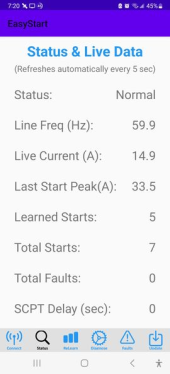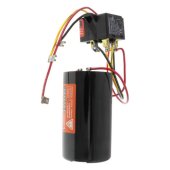RoadTurtle
Solar Enthusiast
- Joined
- Mar 30, 2022
- Messages
- 368
For my TT running on a 2500w generator, i installed microair easystart. aircon went from stalling the generator to running fine. .
Got a bit more interesting in the 5th wheel Multiplus II 2x. It would start the aircon, but MP went into overload, and I was scrambling to shut off anything 120v I could quickly grab. It started and ran, but it wasn't pretty. . Wow, what a difference, and now I have some data 15k ducted aircon. Without easy start, it and what I couldn't turn off, over 3k watts. Adding easy start, and same shut off loads I had before. .
15k ducted aircon. Without easy start, it and what I couldn't turn off, over 3k watts. Adding easy start, and same shut off loads I had before. .
I don't recall the exact numbers, but
400w when fan started up
800w after a few moment
1200w after a few more moments
1400w after a few more moment
1468w compressor finally kicks in .
Total time roughly 2+ minutes from system start to fully operational .
Installation took about 45 minutes. I could probably do one tomorrow in 15 minutes. Positive point, I found the hot copper line rubbing against the frame and it would probably have failed in a matter of months or a couple of years.
Got a bit more interesting in the 5th wheel Multiplus II 2x. It would start the aircon, but MP went into overload, and I was scrambling to shut off anything 120v I could quickly grab. It started and ran, but it wasn't pretty. . Wow, what a difference, and now I have some data
I don't recall the exact numbers, but
400w when fan started up
800w after a few moment
1200w after a few more moments
1400w after a few more moment
1468w compressor finally kicks in .
Total time roughly 2+ minutes from system start to fully operational .
Installation took about 45 minutes. I could probably do one tomorrow in 15 minutes. Positive point, I found the hot copper line rubbing against the frame and it would probably have failed in a matter of months or a couple of years.





